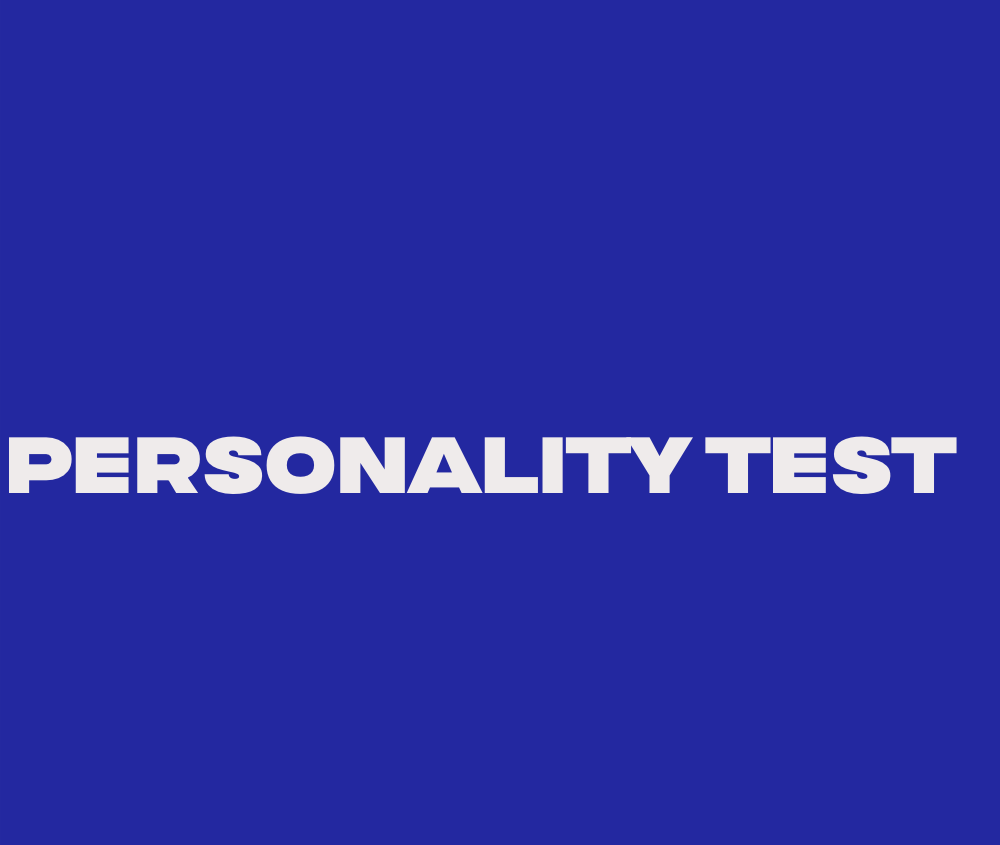Personality Exploration
High-Functioning Borderline Personality Disorder (BPD) Test

Were you aware that 1.6% of the overall population is impacted by Borderline Personality Disorder (BPD)? This percentage represents a considerable number of people potentially facing the challenges of this intricate mental health issue.
BPD can manifest in various ways, with high-functioning BPD being a subtype that can be harder to spot. Individuals with high-functioning BPD may hide their negative emotions, presenting a façade of normalcy to the outside world. However, they still experience symptoms such as perfectionism, feelings of emptiness and loneliness, and a constant need for approval.
Curious if you or someone you know may have high-functioning BPD? Taking a high-functioning BPD test can provide valuable insights into the presence of symptoms and help uncover the appropriate support needed.
Key Takeaways:
- Borderline Personality Disorder (BPD) affects 1.6% of the general population.
- High-functioning BPD can be harder to spot due to the masking of negative emotions.
- Common symptoms of high-functioning BPD include perfectionism, feelings of emptiness, and approval-seeking behavior.
- Taking a high-functioning BPD test can help individuals understand their symptoms and seek appropriate support.
- Early diagnosis and treatment are crucial in managing high-functioning BPD and preventing negative impacts on various aspects of life.
Types of BPD
Borderline personality disorder (BPD) manifests in various forms, each with distinct characteristics and symptoms. Understanding these different subtypes can provide valuable insight into the complexities of the disorder.
Petulant BPD
In petulant BPD, individuals exhibit a strong desire for control and power. They often rely on passive-aggressive tactics to maintain their dominance and may express their frustration indirectly. This subtype is associated with stubbornness and a persistent need for validation.
Impulsive BPD
Impulsive BPD is marked by impulsive behaviors and a tendency to engage in risky activities without considering the consequences. These individuals may struggle with self-control and have difficulty managing their emotions, leading to unpredictable actions.
Self-Destructive BPD
The self-destructive subtype of BPD is characterized by intense feelings of self-hatred and bitterness. Individuals with this subtype may engage in self-sabotaging behaviors or self-harm as a way to cope with their emotional pain. They often have a negative self-image and struggle with low self-esteem.
High-Functioning BPD
High-functioning BPD, also known as quiet BPD, is deceptive in nature as individuals appear to lead successful lives while grappling with intense internal struggles. This subtype is associated with an excessive need for perfectionism, feelings of emptiness, and a strong inclination for seeking approval from others. Despite their outward accomplishments, individuals with high-functioning BPD may experience profound emotional distress.
In summary, the different types of BPD—petulant, impulsive, self-destructive, and high-functioning—reveal the multifaceted nature of this complex disorder. Each subtype presents its own challenges and requires tailored approaches for diagnosis and treatment.
Signs of BPD
Borderline personality disorder (BPD) is a complex mental health condition characterized by various signs and symptoms that can significantly impact an individual’s life. While each subtype of BPD may have specific manifestations, there are common signs that can indicate the presence of the disorder.
1. Intense Mood Swings
Individuals with BPD often experience dramatic and rapid shifts in their emotional state. They may go from feeling happy and euphoric to intense sadness or anger in a matter of minutes or hours. These mood swings can be triggered by seemingly insignificant events and may seem excessive or disproportionate.
2. Self-Destructive Behavior
People with BPD may engage in self-destructive behaviors as a way to cope with their emotional pain or regulate their intense emotions. This behavior can manifest as self-harm, substance abuse, reckless driving, or engaging in risky sexual activities.
3. Fear of Abandonment
Individuals with BPD often have an intense fear of being abandoned or rejected by others. They may go to great lengths to avoid real or perceived abandonment, which can lead to clingy or dependent relationships. This fear can trigger extreme emotional reactions and behaviors.
4. Unstable Relationships
People with BPD tend to have volatile and unstable relationships characterized by intense love and admiration one moment, followed by anger, resentment, and devaluation the next. This pattern of idealization and devaluation can strain relationships, leading to frequent conflict and difficulties in maintaining long-term connections.
5. BPD Splitting
BPD splitting is a unique feature of the disorder that involves perceiving things, situations, or people as either all good or all bad, with little room for gray areas. This black-and-white thinking can lead to rapid shifts in opinions, judgments, and attitudes towards others, often causing conflict and confusion in relationships.
It is important to note that while these signs can be indicative of BPD, they can also overlap with other mental health disorders, such as bipolar disorder and histrionic personality disorder. A comprehensive evaluation by a mental health professional is necessary to accurately diagnose BPD and develop an appropriate treatment plan.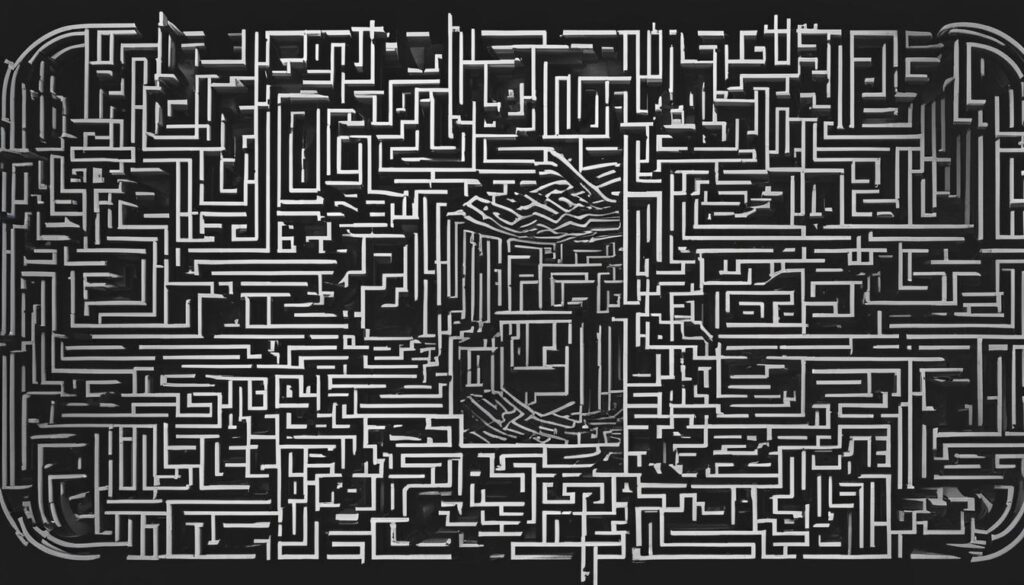
| Signs of BPD | Description |
|---|---|
| Intense Mood Swings | Dramatic shifts in emotions from extreme happiness to intense sadness or anger. |
| Self-Destructive Behavior | Engaging in behaviors that harm oneself, such as self-harm, substance abuse, or risky activities. |
| Fear of Abandonment | An intense and irrational fear of being abandoned or rejected by others. |
| Unstable Relationships | Volatile and unpredictable relationships characterized by idealization and devaluation. |
| BPD Splitting | Perceiving people, situations, or things as either all good or all bad, with little middle ground. |
Causes & Risk Factors
Borderline personality disorder (BPD) is a complex mental health condition with multifactorial causes. While the exact etiology is not fully understood, research suggests that both genetic and environmental factors contribute to the development of BPD.
Genetics play a role in the risk of developing BPD. Twin studies have shown a higher concordance rate for BPD in monozygotic twins compared to dizygotic twins, implying a genetic influence. Recent research has identified specific genes that may be associated with BPD, including DPYD and PKP48, although further studies are needed to fully understand their impact.
Brain function abnormalities have also been observed in individuals with BPD. Research using neuroimaging techniques has indicated dysregulation in areas of the brain involved in emotion regulation, such as the prefrontal cortex and amygdala. These abnormalities contribute to the emotional instability and impulsivity seen in individuals with BPD.
Environmental factors, particularly childhood trauma, also play a significant role in the development of BPD. Individuals who have experienced physical or sexual abuse, neglect, abandonment, or family dysfunction during their formative years are at a higher risk of developing BPD. Childhood trauma disrupts normal psychological development, leading to maladaptive coping strategies and difficulties in emotional regulation.

Research suggests that both genetic and environmental factors contribute to the development of BPD. Genetic influence is observed in twin studies, and certain genes, such as DPYD and PKP48, may be associated with the disorder. Brain imaging studies reveal abnormalities in areas related to emotion regulation. Childhood trauma, including abuse, neglect, and family dysfunction, is a significant environmental factor associated with BPD.
Untreated High-Functioning BPD Effects
Untreated high-functioning borderline personality disorder (BPD) can have detrimental effects on various aspects of an individual’s life. Without proper treatment and support, the negative consequences of high-functioning BPD can manifest in several ways:
- Job loss: Difficulties in regulating emotions and relationships can lead to workplace conflicts and impair job performance.
- Unstable and dangerous relationships: Intense mood swings and fear of abandonment can strain interpersonal connections, leading to a series of tumultuous and potentially harmful relationships.
- Marital stress: The challenges of navigating high-functioning BPD can create significant strain within marriages and partnerships.
- Loss of friends and support systems: The unpredictable nature of BPD symptoms can result in the loss of friendships and support networks.
- Substance abuse: Individuals with untreated high-functioning BPD may turn to substances as a way to cope with their emotional struggles.
- Legal issues: Impulsivity and risk-taking behaviors can result in legal consequences.
- Suicide: The untreated high-functioning BPD is associated with increased suicidal ideation and completed suicides.
Mood disorders, such as depression and anxiety, are highly comorbid with high-functioning BPD. Untreated BPD can exacerbate these mood disorders, amplifying the negative impact on an individual’s mental well-being. Seeking appropriate treatment and support is crucial to mitigate the adverse effects of high-functioning BPD and promote a healthier, more fulfilling life.
In the next section, we will explore the diagnostic process for high-functioning BPD and the criteria used by clinicians to make an accurate diagnosis.
High-Functioning BPD Diagnosis
Diagnosing high-functioning borderline personality disorder (BPD) requires a comprehensive evaluation by a licensed clinician. Unlike other medical conditions, there is no specific test for BPD. Instead, clinicians rely on the criteria outlined in the American Psychiatric Association’s Diagnostic and Statistical Manual of Mental Disorders (DSM-V) to make an accurate diagnosis.
In order to receive an official BPD diagnosis, an individual must meet five out of the nine criteria specified in the DSM-V. These criteria encompass a range of symptoms and behaviors associated with BPD, including unstable relationships, intense fear of abandonment, identity disturbance, chronic feelings of emptiness, and impulsivity.
Diagnosing BPD can be challenging due to the overlapping symptoms it shares with other mental health disorders such as bipolar disorder and histrionic personality disorder. Additionally, the presentation of BPD may vary among individuals, making it crucial for clinicians to conduct a thorough assessment to ensure an accurate diagnosis.
Seeking a professional evaluation is the first step towards understanding and managing high-functioning BPD. A licensed clinician will utilize their expertise and the DSM-V criteria to form a diagnosis, paving the way for appropriate treatment and support.
| DSM-V Criteria for BPD Diagnosis |
|---|
| 1. Frantic efforts to avoid real or imagined abandonment. |
| 2. Unstable and intense interpersonal relationships, characterized by alternating between extremes of idealization and devaluation. |
| 3. Identity disturbance, persistently unstable self-image, and/or sense of self. |
| 4. Impulsivity in potentially self-damaging areas (e.g., substance abuse, reckless driving, binge eating). |
| 5. Recurrent suicidal behavior, gestures, or threats, or self-mutilating behavior. |
| 6. Affective instability due to a marked reactivity of mood (e.g., intense episodic dysphoria, irritability, or anxiety usually lasting a few hours and only rarely more than a few days). |
| 7. Chronic feelings of emptiness. |
| 8. Inappropriate, intense anger or difficulty controlling anger (e.g., frequent displays of temper, constant anger, recurrent physical fights). |
| 9. Transient, stress-related paranoid ideation or severe dissociative symptoms. |
BPD Treatments
When it comes to tackling borderline personality disorder (BPD), effective treatment is key in managing symptoms and enhancing overall well-being. At our clinic, we offer a range of therapeutic approaches tailored to meet the unique needs of individuals with BPD.
Cognitive-Behavioral Therapy (CBT)
One of the most widely used therapeutic techniques for BPD is cognitive-behavioral therapy (CBT). CBT aims to help individuals identify and change negative thinking patterns and behaviors that contribute to emotional distress. Through CBT, our experienced clinicians guide clients in managing emotions, developing healthy coping mechanisms, and fostering positive relationships. By focusing on emotion regulation and behavioral changes, CBT equips individuals with the tools they need to navigate the challenges associated with BPD.
Medication
In some cases, medication may be prescribed to address specific symptoms associated with BPD, such as anxiety, depression, or mood swings. Medications can help stabilize mood, reduce anxiety, and improve overall mental well-being. Our team of psychiatrists works closely with clients to develop personalized medication plans that align with their unique needs and complement other therapeutic interventions.
Holistic Methods
At our clinic, we believe in a holistic approach to BPD treatment, recognizing that the mind and body are interconnected. In addition to traditional therapies, we offer a range of holistic methods that can complement and enhance the overall treatment experience. These include mindfulness practices, relaxation techniques, art therapy, and yoga. These holistic modalities can help individuals develop a greater sense of self-awareness, improve mood, reduce stress, and cultivate a greater overall sense of well-being.
Education and Life Skills
Education seminars and life skills classes play a crucial role in BPD treatment. These programs provide individuals with valuable knowledge about their disorder, its symptoms, and coping strategies. By equipping clients with essential life skills, such as emotion regulation techniques, effective communication, and problem-solving, we empower them to navigate their daily lives with greater confidence and resilience.
At our clinic, we understand that BPD treatment is not a one-size-fits-all approach. Each treatment plan is carefully tailored to meet the individual needs and goals of our clients. Combining evidence-based therapies, medication when appropriate, holistic methods, and educational programs, we strive to provide comprehensive and effective care that supports every aspect of our clients’ well-being.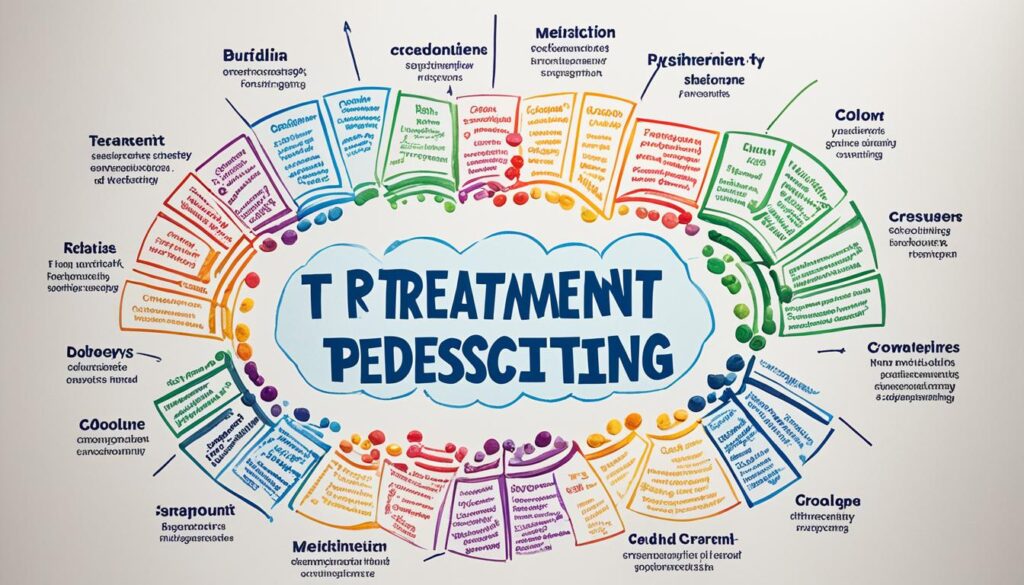
Quiet BPD: The Subtle Form
Quiet borderline personality disorder (BPD) is a term used to describe individuals who experience BPD symptoms but do not openly display them. While their emotions may be just as intense as those with high-functioning BPD, these individuals direct their emotions inwards, making it harder to identify their struggles. Some common symptoms of quiet BPD include intense fears of abandonment, self-inflicted injuries, anxiety, and mood swings.
Living with quiet BPD can be challenging, as individuals may struggle with harmful self-talk and experience emotional disparities that affect their daily life and relationships. The internal turmoil they experience is often hidden from others, making it difficult for them to receive the support and understanding they need.
“Living with quiet BPD often feels like a constant battle with myself. I experience intense emotions, but I keep them bottled up, fearing judgment and rejection. It’s an internal struggle that no one else sees or understands.”
Self-talk plays a significant role in the lives of individuals with quiet BPD. The constant negative self-talk can perpetuate feelings of inadequacy, self-doubt, and shame. These individuals may find it challenging to believe in their own abilities and worthiness, leading to a constant need for external validation and approval.
Moreover, emotional disparities are prevalent among those with quiet BPD. They may experience significant emotional highs and lows, which can be exhausting and overwhelming. These emotional fluctuations can impact their relationships, causing instability and misunderstandings.
It is essential for individuals with quiet BPD to seek help and support. Therapy, specifically dialectical behavior therapy (DBT), can be an effective treatment approach to manage and regulate emotions, improve self-talk, and develop healthier coping mechanisms. With proper support and understanding, individuals with quiet BPD can learn to navigate their emotions and build fulfilling, meaningful lives.
| Symptoms of Quiet BPD | Impact of Quiet BPD |
|---|---|
| Anxiety | Difficulty forming and maintaining relationships |
| Intense fears of abandonment | Feelings of loneliness and isolation |
| Self-inflicted injuries | Struggles with self-esteem and self-worth |
| Mood swings | Internalized sense of shame and guilt |
Childhood Trauma and BPD
Childhood trauma is a significant factor in the development of borderline personality disorder (BPD). Traumatic experiences, such as physical or emotional abuse, neglect, and family dysfunction, can have lasting effects on a person’s mental and emotional well-being.
During early childhood, when an individual’s brain and coping mechanisms are still developing, trauma can disrupt the natural processes and lead to maladaptive coping strategies. The mind may split as a defense mechanism, trying to navigate the overwhelming emotions and experiences.
This internalized sense of abandonment and emotional instability, stemming from childhood trauma, can contribute to the development of BPD later in life. The impact of childhood trauma on BPD cannot be ignored, as it shapes the individual’s perception of themselves and others, as well as their ability to regulate emotions and maintain stable relationships.

Understanding the connection between childhood trauma and BPD is crucial in providing appropriate support and treatment for individuals affected by this complex disorder. By addressing the root causes and helping individuals heal from their traumatic experiences, we can work towards promoting resilience, emotional stability, and healthier relationships.
It is important to approach individuals with BPD and a history of childhood trauma with empathy and compassion, creating a safe environment where they can explore and heal from their past experiences.
Conclusion
Borderline personality disorder (BPD) is a complex mental health condition that can have a profound impact on an individual’s daily life and relationships. High-functioning BPD, characterized by concealed negative emotions, perfectionism, and an intense desire for approval, can be difficult to detect.
Early diagnosis and appropriate treatment are paramount in effectively managing BPD symptoms and mitigating their negative effects on various aspects of life. Seeking professional support from mental health experts and exploring a range of treatment options, including therapy and medication, can empower individuals with BPD to live fulfilling and meaningful lives.
It is crucial to recognize the importance of understanding and addressing BPD. With the right tools and resources, individuals with BPD can cultivate healthier coping mechanisms, regulate their emotions, and cultivate more stable and fulfilling relationships. BPD is a journey, and with the right guidance and support, individuals can overcome the challenges and create a brighter future. The key differences between the BPD test and the East West North South personality test lie in their approach and focus. The BPD test is designed to assess Borderline Personality Disorder, while the East West North South personality test evaluates personality traits based on directional preferences. Choose the right personality test for you. A high-functioning BPD test is a screening tool that helps individuals assess their symptoms and determine if they may have high-functioning BPD. It can provide insight into hidden negative emotions, perfectionism, feelings of emptiness, and approval-seeking behavior. The four types of BPD are petulant BPD, impulsive BPD, self-destructive BPD, and high-functioning BPD. Signs of BPD can include intense mood swings, fear of abandonment, unstable relationships, BPD splitting (viewing things as all good or all bad), and comorbidity with other mental health disorders. The exact causes of BPD are not fully understood, but genetic factors, brain function abnormalities, and childhood trauma are believed to contribute to the risk of developing BPD. Untreated high-functioning BPD can lead to negative effects such as job loss, unstable relationships, substance abuse, mood disorders, and even suicide. Diagnosing high-functioning BPD involves a comprehensive evaluation by a licensed clinician who assesses an individual’s symptoms against the criteria outlined in the DSM-V. BPD treatments may include cognitive-behavioral therapy (CBT), medication for symptom management, holistic approaches, and life skills classes tailored to the individual’s needs. Quiet BPD, also known as high-functioning BPD, is a subtle form of BPD where individuals may not outwardly show symptoms but experience intense fears of abandonment, self-inflicted injuries, anxiety, and mood swings. Yes, childhood trauma, such as abuse, neglect, and family dysfunction, is a significant factor in the development of BPD. Traumatic experiences disrupt proper development and coping mechanisms, contributing to BPD later in life. Borderline personality disorder is a complex mental health disorder that can significantly impact an individual’s daily functioning and relationships. Early diagnosis and appropriate treatment are crucial for managing symptoms and preventing negative consequences.What Are the Key Differences Between BPD Test and the East West North South Personality Test?
FAQ
What is a high-functioning borderline personality disorder (BPD) test?
What are the four types of BPD?
What are the signs of BPD?
What causes borderline personality disorder?
What are the effects of untreated high-functioning BPD?
How is high-functioning BPD diagnosed?
What are the treatments for BPD?
What is quiet BPD?
Is childhood trauma associated with BPD?
What is the conclusion about BPD?
Emmeline is the backbone of our content creation team, bringing complex psychological concepts to life with clarity and empathy. As our Expert Writer, she crafts engaging, insightful articles that guide readers through the intricacies of personality assessments and what they reveal about the human condition. Her passion for psychology and personal development shines through in every piece she writes.
Enneagram of Personality
Unveiling the Narrative Enneagram: a Deep Dive Into Personality Stories
Glimpse into the captivating world of the Narrative Enneagram, where the stories of personalities intertwine in mysterious ways—prepare to be spellbound.

Have you ever thought about the hidden stories that influence our lives as we delve into the complex fabric of human personalities?
The enigmatic realm of the Narrative Enneagram beckons us to unravel the depths of our personality stories, delving into the complexities that define who we are.
Each enneatype holds a unique tale, waiting to be unveiled and understood. Join us on this journey of discovery as we peel back the layers of the Enneagram's storytelling power, offering insights that may just transform the way you perceive yourself and others.
Key Takeaways
- Enneagram narratives unveil core motivations and fears.
- Stories deepen understanding of diverse personalities.
- Personality stories enrich self-awareness and empathy.
- Narratives offer insights into human behaviors and growth potential.
Enneagram Types and Their Stories
Analyzing Enneagram types through their associated personality stories offers a profound insight into the core motivations and fears that drive each individual's behavior. Each Enneagram type is like a character in a grand narrative, with distinct personality types shaping their outlook on life.
For example, Enneagram Type 1, the Perfectionist, is driven by a desire for integrity and improvement but battles harsh inner criticism. On the other hand, Enneagram Type 4, the Individualist, craves authenticity and uniqueness while grappling with feelings of inadequacy.
The Enneagram Type 7, known as the Enthusiast, seeks excitement and avoids pain, fearing constraints and monotony. Lastly, Enneagram Type 9, the Peacemaker, values harmony and unity but may struggle with asserting themselves and facing internal conflicts.
Understanding these Enneagram types and their associated stories provides a roadmap to comprehend the intricate tapestry of human personalities and behaviors.
Personality Traits and Narrative Patterns

Personality traits in the Narrative Enneagram reveal intricate layers of motivations, fears, and behaviors that intricately weave individuals' narratives and shape their life experiences. When delving into the connection between personality traits and narrative patterns, one can uncover profound insights into human consciousness and the intricacies of the self.
Here are some key points to consider:
- Each Personality Type in the Enneagram offers a unique perspective on the world, influencing how individuals perceive and engage with their surroundings.
- Understanding narrative patterns can help individuals identify recurring themes in their life stories, shedding light on core struggles and growth opportunities.
- Exploring the relationship between beliefs, emotions, and behaviors can unveil the cohesive storylines that shape personal narratives.
- By examining personality traits and narrative patterns, individuals can deepen their self-awareness, foster empathy, and embark on a transformative journey towards personal growth and self-realization.
Deep Dive Into Enneagram Narratives
Delving into Enneagram narratives uncovers the intricate tapestries of individual personalities, weaving together motivations, fears, and defense mechanisms into compelling stories of self-discovery.
These narratives delve deep into the human experience, offering profound insights into the core fears, desires, and coping mechanisms that shape our behaviors.
Through meditation sessions and introspective practices, individuals can peel back the layers of their personalities, revealing hidden aspects of themselves that may have been previously unrecognized.
Understanding the Enneagram's Storytelling Power

Utilizing the power of storytelling, the Narrative Enneagram offers a profound lens through which to explore and understand the complexities of personality types and behavior patterns. Stories play a crucial role in connecting individuals with Enneagram types on a deeper, more relatable level, facilitating a better grasp of the intricacies involved. The human mind is naturally drawn to narratives, making this approach an effective tool for delving into the depths of the Enneagram system.
- Stories help individuals relate to Enneagram types on a personal level.
- Narrative Enneagram tales shed light on the motivations, fears, and growth opportunities tied to each type.
- Personal anecdotes enrich the comprehension and practical application of Enneagram principles.
- Story-based learning cultivates empathy, self-reflection, and a profound appreciation of the Enneagram's transformative potential, showcasing the Enneagram as an act of love towards oneself and others.
Personality Stories: Unveiling the Enneagram
Connecting with the depths of the Enneagram system, we uncover profound insights through the revealing lens of personality stories. Paying attention to these narratives allows us to delve into the core motivations, fears, and desires that shape each Enneagram type's behavior.
These stories serve as windows into how individuals of different personalities perceive and engage with the world around them, offering a rich tapestry of perspectives from diverse backgrounds around the world.
Frequently Asked Questions
What Is the Most Common Enneagram Type?
The most common Enneagram type is Type Nine, also known as the Peacemaker or Mediator. Type Nine individuals are characterized by their harmony-seeking nature, desire for peace, and tendency to avoid conflict. They excel at seeing multiple perspectives, prioritizing relationships, and maintaining a calm demeanor.
However, they may face challenges such as inertia, indecision, and merging with others' priorities. Understanding Type Nine's motivations and behaviors can enhance communication, conflict resolution, and relationship dynamics.
What Is the Enneagram Theory of Personality?
The Enneagram theory of personality is a profound system that delves into nine distinct personality types, each with unique motivations, fears, and desires. It offers a roadmap for personal growth by unraveling habitual patterns.
One fascinating statistic is that 56% of individuals mistype themselves initially. Understanding the Enneagram helps us navigate our inner world, fostering empathy, compassion, and deeper connections.
It's a powerful tool for self-awareness and interpersonal dynamics.
What Does the W Mean in Enneagram?
In the Enneagram, the 'W' stands for 'Wings,' which represent the adjacent personality types influencing an individual's core type. Wings provide depth by blending traits from neighboring types, enhancing our understanding of ourselves.
Recognizing our wings can unveil additional traits, behaviors, and motivations that complement our dominant type, nurturing personal growth. Exploring these nuances can lead to increased self-awareness, encouraging a more profound appreciation of our multifaceted personalities.
What Is the Enneagram in a Nutshell?
In a nutshell, the Enneagram is a powerful tool for understanding personality. It delves deep into our core motivations, fears, and desires, illuminating why we behave the way we do.
Conclusion
In unraveling the intricate tapestries of personality stories within the Enneagram, we've embarked on a journey of self-discovery and growth. Like a kaleidoscope of emotions and experiences, each type's narrative reveals layers of complexity and depth.
As we delve deeper into these stories, we begin to understand the power of empathy and compassion in shaping our relationships and enhancing our emotional intelligence.
The Enneagram's storytelling magic invites us to embrace our uniqueness and celebrate the beauty of human diversity.
Felicity, our Author, pens in-depth articles and guides that delve into the heart of personal discovery. Her narrative-driven approach weaves together theory, practice, and personal anecdotes, making the journey of self-exploration both relatable and inspiring. Felicity’s contributions help illuminate the path for those seeking a deeper understanding of themselves and their relationships.
Enneagram of Personality
Why Do INTPs Fit Well With Enneagram Types?
Buckle up for a deep dive into why INTPs seamlessly align with specific Enneagram types, unveiling the hidden connections that make this pairing so intriguing.

When exploring the complex puzzle of personality compatibility, it is evident how INTPs intricately connect with different Enneagram types.
The synergy between INTPs and Enneagram types goes beyond surface-level similarities, delving into the depths of cognition and behavior.
By unraveling the intricate tapestry of traits shared between INTPs and specific Enneagram types, a fascinating exploration awaits to uncover the underlying reasons behind their natural affinity.
Key Takeaways
- Alignment between Enneagram 5's pursuit of knowledge and INTPs' analytical nature fosters strong intellectual connections.
- Complementary traits of independence and introspection create harmonious dynamics between Enneagram 5 and INTPs.
- Shared pursuit of understanding and mastery enhances mutual support and collaborative growth in intellectual endeavors.
- Enneagram lens provides insights into core motivations, enhancing understanding of INTPs' cognitive functions and behaviors.
Common Traits of INTPs and Enneagram Types
In exploring the common traits shared by INTPs and Enneagram types, a notable alignment is often observed between INTPs and Enneagram type 5 due to their shared quest for logical understanding and inherent tendency to distrust the physical world. This connection stems from the blend of Introverted Thinking (Ti) and Extroverted iNtuition (Ne) functions prominent in both INTPs and Enneagram type 5 individuals. The focus on internal logical frameworks and abstract ideas resonates strongly with this pairing, fostering a deep appreciation for intellectual exploration and problem-solving.
Enneagram type 5 INTPs demonstrate a nuanced approach based on their wing preference, with those leaning towards a 4 wing emphasizing creativity and emotional depth alongside Ti and Ne, while those favoring a 6 wing prioritize stability and practicality. This diversity within the subtype distribution underscores the complexity present in the shared traits of these personalities. The intrinsic link between self-worth and intellectual competence for Enneagram type 5 INTPs highlights a common thread of valuing accuracy and proficiency in information processing, reflecting their mutual pursuit of understanding and mastery in the realm of knowledge.
Harmonious Dynamics Between INTPs and Enneagram

Exploring the harmonious dynamics between INTPs and Enneagram types reveals intricate intersections of personality traits that contribute to enriching relationships and mutual understanding. When considering cognitive functions, INTPs' dominant Ti function, seeking logical consistency, pairs well with various Enneagram types that share similar values. Enneagram 5's pursuit of knowledge aligns with INTPs' analytical nature, fostering a shared interest in understanding complex concepts. Additionally, the adaptability of INTPs resonates with Enneagram 7's enthusiasm for new experiences, creating a dynamic of exploration and growth. Moreover, the common Enneagram traits such as independence, introspection, and avoidance of conflict are aspects that INTPs enjoy and find harmony with in Enneagram types like 4 and 9. These interactions offer opportunities for personal growth as INTPs' perspectives are broadened and changed throughout the relationships, leading to a deeper understanding of themselves and others.
| INTPs Enjoy | Common Enneagram Traits | Personal Growth |
|---|---|---|
| Logical Consistency | Independence | Broadened Perspectives |
| Curiosity | Introspection | Deeper Self-Understanding |
| Adaptability | Harmony | Growth Opportunities |
Exploring INTP Compatibility With Enneagram Types
With a focus on compatibility between INTPs and Enneagram types, we delve into the intricate dynamics that arise from the intersection of their personality traits. INTPs exhibit a strong affinity with Enneagram type 5 due to their shared traits of analytical thinking and a deep-rooted focus on understanding complex systems. The alignment between Enneagram type 5 and INTPs' natural curiosity, problem-solving abilities, and thirst for knowledge creates a harmonious relationship. The combination of INTP's Ti-Ne cognitive functions and Enneagram type 5's traits fosters a mutual emphasis on logical exploration and intellectual pursuits, enhancing their compatibility.
Enneagram type 5 complements INTPs' introspective nature, independence, and preference for in-depth analysis and research. This mutual support encourages both parties to delve deeper into their intellectual pursuits and strive for mastery. The harmony between INTPs and Enneagram type 5 propels their shared quest for expertise and the pursuit of challenging intellectual endeavors. The compatibility between these two types lays a solid foundation for collaborative growth in the realm of intellectual pursuits.
Key Reasons Behind INTP-Enneagram Synergy

What fundamental aspects of personality and cognitive functions contribute to the seamless synergy between INTPs and Enneagram type 5? When exploring the key reasons behind the compatibility of INTPs with Enneagram type 5, several crucial factors come into play:
- Analytical Thinking: Both INTPs and Enneagram type 5 individuals exhibit a strong inclination towards analytical thinking, allowing them to dissect complex ideas and concepts with precision.
- Quest for Knowledge: The shared trait of a relentless quest for knowledge drives both personality types to seek deeper understanding and expertise in various subjects, fostering a mutual appreciation for intellectual growth.
- Introverted Thinking Function: The alignment of Enneagram type 5's characteristics with the INTP's dominant introverted thinking function creates a harmonious environment for logical analysis and problem-solving.
- Desire for Competence: Enneagram type 5's emphasis on competence and information resonates well with INTPs' pursuit of mastery and proficiency, enhancing their collaborative efforts in exploring intricate theories and ideas.
Understanding INTPs Through Enneagram Lens
The compatibility between INTPs and Enneagram types becomes clearer when examining how the Enneagram lens provides a unique perspective on understanding INTPs' cognitive functions and behaviors. Enneagram types offer insights into INTPs' core motivations, decision-making styles, and emotional responses, shedding light on the intricacies of their personalities.
By delving into how INTPs interact with different Enneagram types, we can decipher the nuances of their thought processes and behaviors in various situations. Understanding INTPs through the Enneagram lens allows us to explore how their analytical thinking, curiosity, and independence are influenced by their Enneagram type, providing a comprehensive view of their character.
Frequently Asked Questions
What Enneagram Type Is INTP Most Common?
Among INTPs, Enneagram type 5 is most common, with approximately 71% identifying with this type. Enneagram type 9 follows as the second most common, encompassing around 12% of INTPs.
Less prevalent among INTPs are types 1, 2, and 3. These statistics shed light on the Enneagram landscape within the INTP personality framework, offering valuable insights into their tendencies and behaviors.
What Is the Most Likable Enneagram Type?
Type 9 is often perceived as the most likable enneagram type. Their agreeable and harmonious nature resonates well with many, fostering positive relationships. The ability to avoid conflict while maintaining peace appeals to a wide audience.
Type 9's emphasis on unity and understanding promotes a sense of camaraderie. Overall, the likability of Type 9 stems from their ability to create a welcoming and inclusive environment that many find comforting and appealing.
What Is the Most Intelligent Enneagram Type?
Enneagram Type 5 stands out as the most intelligent enneagram type. Known for their analytical prowess and deep understanding, they excel in critical thinking and problem-solving. Their thirst for knowledge and ability to grasp complex concepts make them highly adept at synthesizing information.
Type 5 individuals, including INTPs, are renowned for their intellectual depth, curiosity, and capacity to think independently. This inclination towards deep thinking and research solidifies their reputation as the most intellectually inclined enneagram type.
What Is the Most Difficult Enneagram Type to Get Along With?
Navigating relationships with Enneagram type 8 can be challenging due to their assertiveness and need for control. Their directness may clash with our preference for independence and intellectual exploration.
Connecting with their focus on power dynamics and confrontation can be tough. Their strong-willed nature may create friction with our reserved tendencies.
Understanding each other's perspectives is crucial for harmony between INTPs and Enneagram type 8 individuals.
Conclusion
In conclusion, the alignment between INTPs and Enneagram types offers valuable insights into their personalities and growth potential.
While some may argue that personality types are limiting and reductive, understanding the nuances of Enneagram types can actually enrich our self-awareness and personal development.
By recognizing the harmonious dynamics between INTPs and Enneagram types, we can appreciate the depth and complexity of human personality, leading to a more holistic understanding of ourselves and others.
Felicity, our Author, pens in-depth articles and guides that delve into the heart of personal discovery. Her narrative-driven approach weaves together theory, practice, and personal anecdotes, making the journey of self-exploration both relatable and inspiring. Felicity’s contributions help illuminate the path for those seeking a deeper understanding of themselves and their relationships.
The Big Five (OCEAN)
Ocean County NJ Tax Assessment Records: A Complete Guide
Mysteries surrounding Ocean County NJ Tax Assessment Records await exploration, revealing how they shape our properties and financial obligations in unexpected ways.
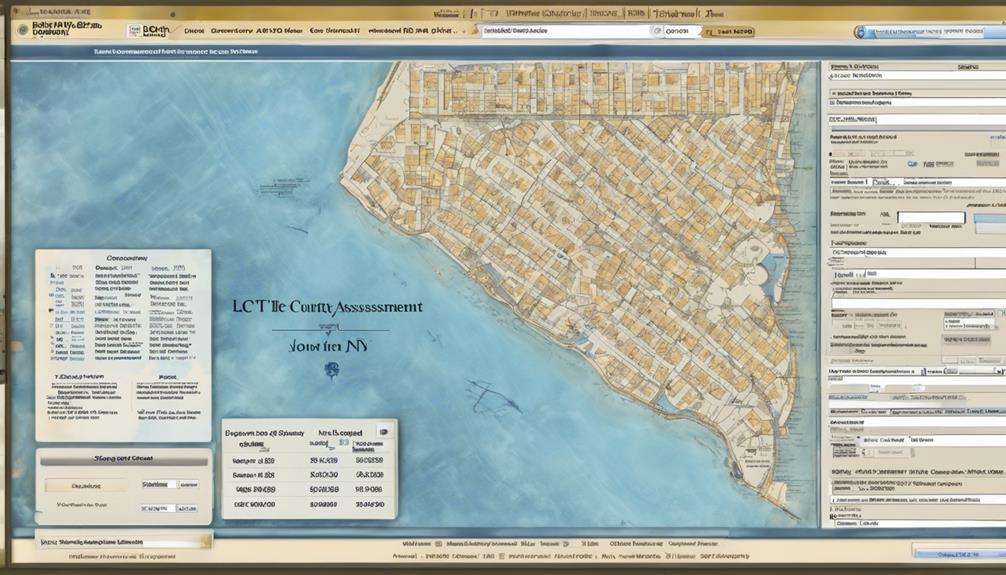
As we delve into the complexities of Ocean County NJ Tax Assessment Records, one may be pleasantly surprised by the abundance of information waiting to be discovered.
Understanding the nuances of property tax assessments can often shed light on a subject that impacts our daily lives more than we realize.
Stay tuned to uncover how these assessments influence not just our properties but also our financial responsibilities in ways we may not have considered before.
Key Takeaways
- Access detailed property info online for Ocean County tax assessments.
- Understand property valuation, deductions, and tax impact through assessment data.
- Manage tax obligations effectively by applying for relief programs and appealing discrepancies.
- Stay informed and plan ahead by regularly reviewing and interpreting tax assessments.
Understanding Ocean County Tax Assessments
Analyzing Ocean County tax assessments involves evaluating properties based on their market value, which is crucial for determining property tax obligations. The County Assessor assesses properties at 100% of their market value to calculate property taxes.
Understanding property tax assessment information is vital, as it directly influences the tax obligations of property owners. In Ocean County, tax relief programs are available to eligible property owners, offering potential reductions in property tax bills. Additionally, special district tax rates may apply, impacting the total amount due.
It's important for property owners to be aware of these rates and how they can affect their overall tax liability. By staying informed about the Tax Assessor's evaluations, market value assessments, Tax Relief options, and Tax Rates, property owners can better manage their property tax responsibilities in Ocean County.
Accessing Tax Assessment Records

To access Ocean County NJ tax assessment records online, property owners can utilize the official website to view detailed property information, including assessments, tax rates, and deductions.
The County's online platform offers a user-friendly search function that allows individuals to easily locate tax assessment records by entering either the property address or owner's name. This convenient feature enables property owners to obtain current property tax assessments promptly and verify their payment status without the need to visit government offices physically.
By leveraging the online database provided by Ocean County, residents can conduct thorough property tax research and access essential information regarding taxation. This accessibility to tax assessment records empowers property owners to stay informed about their financial obligations, make informed decisions, and ensure compliance with tax regulations.
Whether for personal reference or professional purposes, the County's online platform serves as a valuable resource for individuals seeking to navigate the realm of property taxation efficiently.
Interpreting Tax Assessment Data
When delving into tax assessment data, we can uncover crucial insights about property valuation, sales history, and available deductions. Understanding the municipal tax rate set by the County Board of Taxation is essential for property owners in Ocean Township. The tax rate of $2.323 per $100 of assessed value, with a ratio of 72.76%, plays a significant role in determining property taxes. Additionally, deductions of $250 are available for veterans, senior citizens, disabled persons, and surviving spouses, providing potential savings for eligible individuals.
Analyzing tax assessment data can help property owners ensure that their assessments are accurate and in line with the principle of 'full and fair.' By comparing their property's valuation with similar properties in the area, owners can assess if their assessment aligns with market values. This comparative analysis can be particularly useful when preparing for appeals if discrepancies are noted.
Access to online property tax assessment information and sales data further empowers property owners to make informed decisions regarding their assessments. By interpreting this data diligently, property owners can navigate the tax assessment process more effectively and advocate for fair evaluations.
Impact of Assessments on Property Taxes
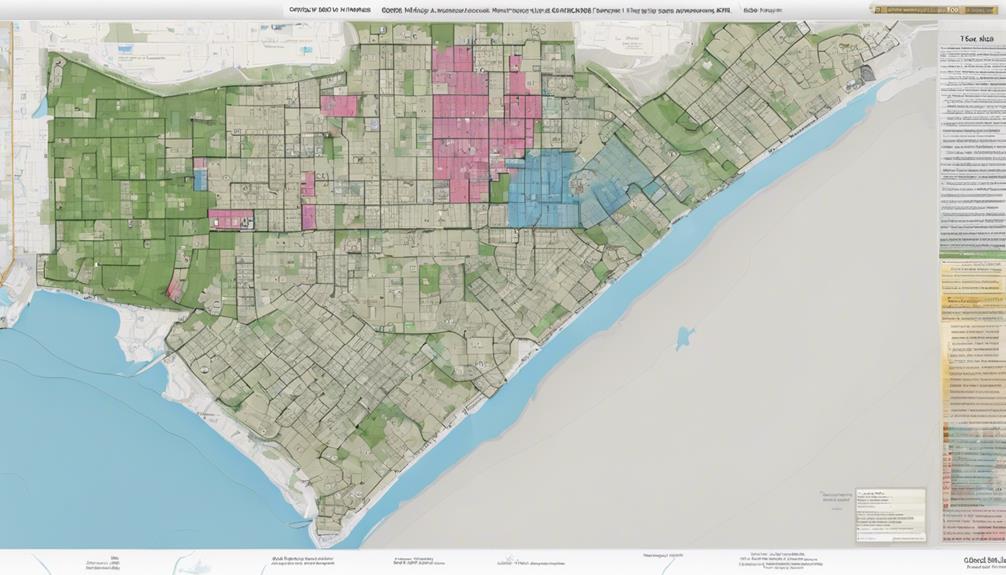
Property tax assessments in Ocean County, NJ directly influence the amount property owners pay in taxes each year. These assessments, conducted by the County Board of Taxation, determine the property's value for tax purposes. The impact of property assessments on tax bills is significant, as higher assessments often lead to increased property tax bills, while lower assessments can result in reduced tax liabilities for homeowners in Ocean Township.
Factors such as market value, property size, location, and improvements play a crucial role in determining property assessments. Property owners should be aware of how these assessments affect their property tax bills to budget effectively. Understanding the relationship between assessments and taxes allows homeowners to plan for potential increases and make informed decisions regarding their properties.
Tips for Managing Your Tax Assessments
Considering the impact of assessments on property taxes, it's crucial for homeowners in Ocean County, NJ to proactively manage their tax assessments by following key strategies. Regularly reviewing property tax assessments is essential to ensure accuracy and fairness.
Understanding factors like market value and assessment ratios can help you assess the reasonableness of your assessment. Utilize resources such as online property tax records and assessment data to stay informed about the valuation of your property. For eligible individuals, applying for tax relief programs or exemptions through the Division of Taxation is advisable.
Senior citizens may benefit from specific tax relief programs, but an application must be submitted to the appropriate authorities. If you notice any discrepancies or have concerns about your tax assessments, don't hesitate to address them through the appeal process with the County Board.
Stay proactive and informed to effectively manage your tax assessments.
Frequently Asked Questions
How Do I Find My NJ Property Tax Records?
We find our NJ property tax records by accessing Ocean County's official website. We can search using the property address or owner name to verify our current assessments and payment status.
Detailed information about our property tax bills and assessments is available online. It's important to stay informed about any updates or changes to our NJ property tax records.
How Do I Fight My NJ Tax Assessment?
When it comes to fighting your NJ tax assessment, we've got your back. Picture this: we're diving into the process head-on, armed with evidence and determination.
By appealing to the Monmouth County Board of Taxation before the January 17, 2023, deadline, we can make our case for a fair assessment. Utilize the online filing option for convenience, analyze the Heat Map for insights, and gather comparable assessments to support our appeal.
Let's tackle this challenge together!
How Does NJ Tax Assessment Work?
Sure, NJ tax assessment works by determining the market value of properties in Ocean County. The County Assessor evaluates properties at 100% of their market value.
Tax relief programs are available for eligible individuals to reduce property tax bills. Special district tax rates can impact the total tax amount due.
Calculating property tax involves multiplying the assessed value by the tax rate. This process ensures fair taxation based on property values.
Can a Tax Assessor Come on Your Property in Nj?
Yes, tax assessors can come on your property in NJ for assessments. For instance, last year, our neighbor had an assessor visit to evaluate their property.
It's important to note that assessors carry identification to prove their legitimacy. Homeowners should always verify credentials by contacting the relevant office or police.
Notification is usually given before assessments, ensuring transparency in the process.
Where Can I Find Comprehensive Information on Ocean County NJ Tax Assessment Records?
If you’re looking to access Ocean County assessment records, you can find comprehensive information on their official website. The website provides detailed information on tax assessment records for properties within Ocean County, NJ. You can easily access ocean county assessment records online to gather the information you need.
Conclusion
In conclusion, navigating the world of tax assessments in Ocean County, NJ can feel like sailing through uncharted waters. By understanding the intricacies of assessments, accessing relevant records, and interpreting data accurately, property owners can steer their way towards smoother tax management.
Remember, just like a skilled captain adjusts their sails to the wind, staying informed and proactive can help you weather any tax assessment challenges that may come your way.
Smooth sailing, fellow property owners!
Eugene brings a fresh, dynamic voice to our platform as one of our talented Writers. Specializing in research-driven content, he explores the latest findings in psychology and personal growth, translating them into actionable insights for our readers. Eugene’s work is fueled by a curiosity about what makes us tick and a desire to help others unlock their potential.
-

 Self-Understanding3 months ago
Self-Understanding3 months agoUnderstanding DMCA Protections & Compliance
-

 Relationship Dynamics3 months ago
Relationship Dynamics3 months agoCan a Man Truly Love His Side Chick
-

 Enneagram of Personality1 week ago
Enneagram of Personality1 week agoEnneagram Test: Printable Version for Easy Self-Discovery
-

 Personality Exploration2 weeks ago
Personality Exploration2 weeks agoDiscover Your Traits with Atomic Habits Personality Test
-

 Personality Exploration3 months ago
Personality Exploration3 months agoDOPE Personality Test Explained: Traits & Types
-

 Personality Exploration3 months ago
Personality Exploration3 months agoAlpha Beta Omega Sigma Female Personality Quiz
-

 Personality Exploration2 weeks ago
Personality Exploration2 weeks agoAlpha Beta Omega Personality Test Explained
-

 Self-Understanding2 months ago
Self-Understanding2 months agoDiscover Your Traits with Our Personality Test
